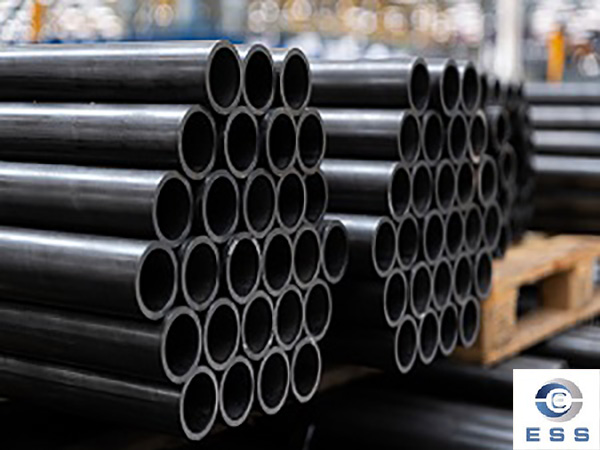Mild steel pipes are a type of metal pipes made from a combination of carbon and iron. They are used in a wide range of industrial applications, such as the construction of buildings and warehouses, infrastructure projects, and heavy machinery.
Mild steel pipes have several advantages compared to other types of steel pipes, including lower cost, durability, and easy installation. These pipes are also resistant to rust, corrosion, and fire, making them ideal for areas with harsh weather conditions. To join two pieces together, mild steel pipes can be welded, connected using bolts and nuts, or affixed using glue. Additionally, these pipes can be painted for aesthetic purposes or galvanized for greater protection against the ost corrosion.
Commonly used grade for mild steel is ASTM A106, which is suitable for applications involving temperatures usually ranging from -20°C to 400°C.
Mild steel pipes come in different shapes and sizes, such as round, square, rectangular, U-shaped, and helical. Depending on their purpose, mild steel pipes can also be treated with various coatings and finishes.

It is one of the most widely used metals in construction, as it is incredibly versatile, easy to work with, and relatively inexpensive. Mild steel pipes are hollow tubes that are most commonly used in plumbing, industrial, and mechanical applications. These pipes are easily recognizable because of their dull gray or black finish, which is due to a thin layer of oxidation on the surface.
Mild steel pipe: shapes and sizes
Mild steel pipes come in a variety of shapes and sizes, depending on the specific application. These pipes generally have an inside and outside diameter, with wall thickness varying depending on the strength requirements of the particular application. The wall thickness of mild steel pipes are measured in millimeters or inches. Commonly used diameters range from ½ to 6 inches, and wall thicknesses can range from 16 gauge (1.6 mm) to schedule 80 (8.4 mm). For higher pressures, thicker walls may be necessary.
Mild steel pipe process
When selecting mild steel pipes for certain applications, it is important to consider the corrosive properties of the metal. Mild steel is often susceptible to rust, so proper coating or treatment may be necessary to ensure the pipe’s longevity. Seamless steel pipes offer superior strength and corrosion resistance because they are welded together from different pieces of metal. Other common types of mild steel pipes include galvanized, black, and insulated pipes.
Mild steel pipe application
Mild steel pipes have a wide range of uses and applications across many industries. These pipes can be used for water supply, sewage, natural gas transmission, firefighting, HVAC systems, electrical conduit and drainage, culvert lines, and more. They are also commonly used in automotive and agricultural structures, manufacturing processes, oil and gas exploration and production, and construction projects.
Summary
Overall, mild steel pipes can be used for a variety of purposes. Careful selection and installation is the key to maximizing the usefulness and life span of these pipes, as the right size and corrosive properties need to be taken into account for proper functioning. With proper care, mild steel pipes can provide a cost-effective and reliable solution for almost any construction or plumbing project.
Read more:How Many Types of Mild Steel Pipe Materials Are There? or How long can mild steel pipes last?













 Eastern Steel Manufacturing Co.,Ltd not only improve product production and sales services, but also provide additional value-added services. As long as you need, we can complete your specific needs together.
Eastern Steel Manufacturing Co.,Ltd not only improve product production and sales services, but also provide additional value-added services. As long as you need, we can complete your specific needs together.










